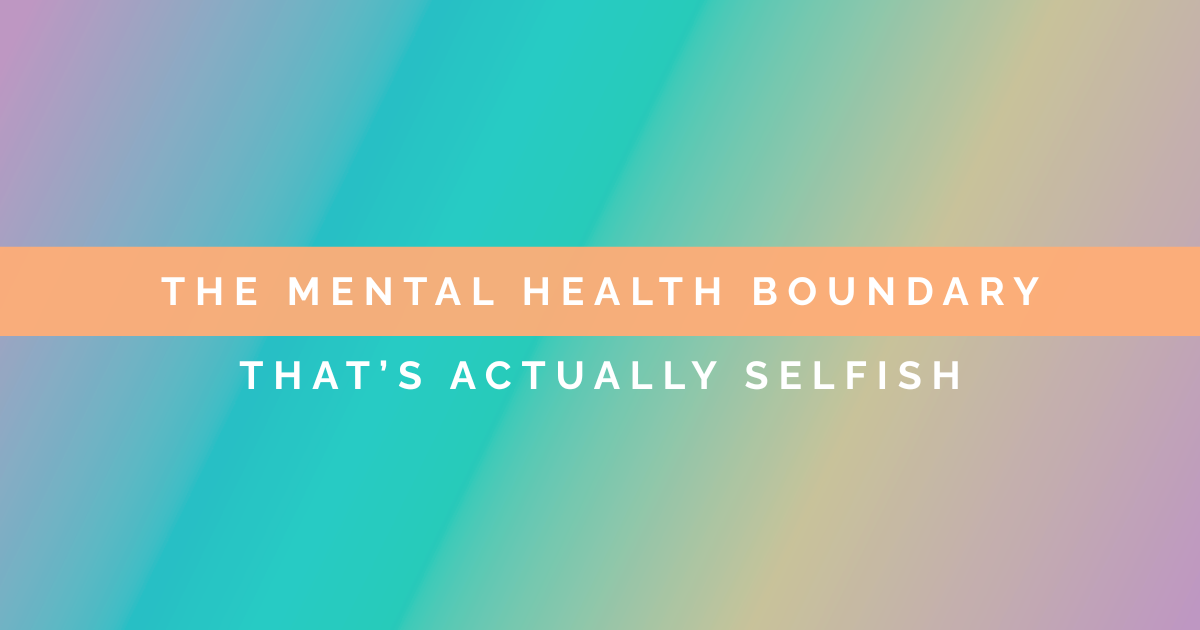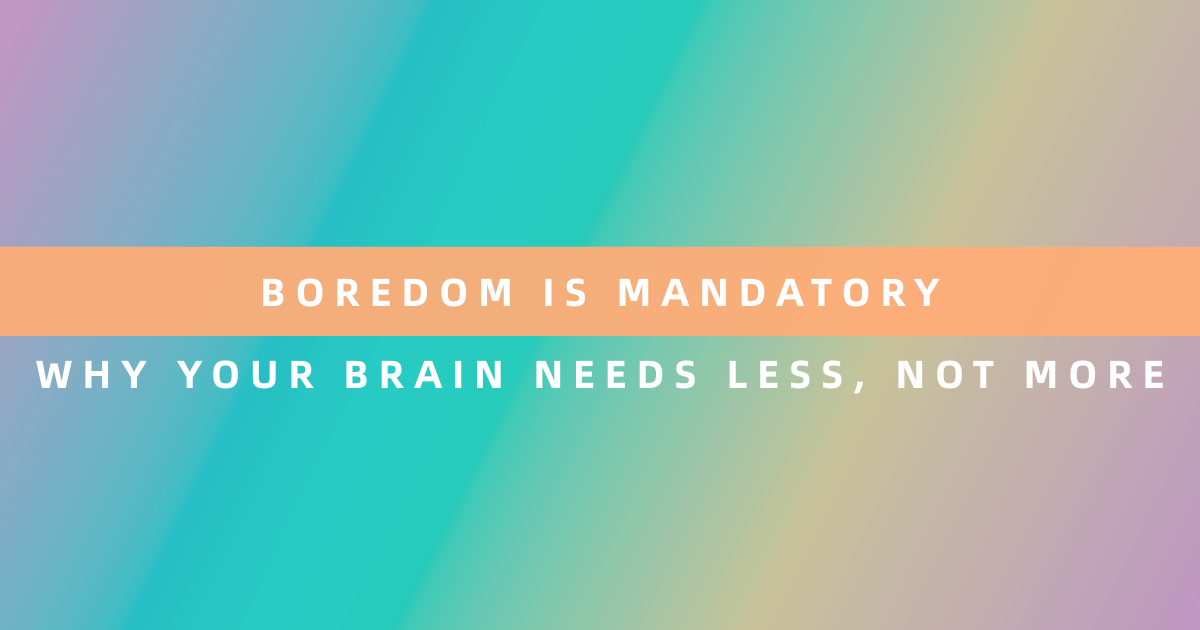People move through life in different ways. Some use wheelchairs. Some speak using sign language. Others share their pronouns so they’re seen for who they are. Many come from different cultures with their own stories and experiences. These differences are usually part of the inclusion conversation. But mental health often gets left out. Many people deal with it, but few feel safe discussing it.
Mental health is a part of diversity, yet it is often treated as something personal to manage alone. In many cultures and workplaces, it is still considered taboo, something to be kept private. But mental health is not a weakness. It shapes how we connect, how we navigate life, and how we show up in the world. Ignoring it means leaving people out of conversations about inclusion.
True diversity makes space for every part of a person’s experience, including the ones we cannot see.
In this article, we will explore small but meaningful steps that create real change.
The Overlooked Side of Diversity
Diversity is more than what we see. It is not just about race, gender, or physical abilities. It is also about mental well-being. But somehow, mental health always seems to be left out of the conversation.
Workplaces ensure buildings are wheelchair accessible, but often lack support for employees dealing with anxiety or burnout. Schools teach students about kindness and inclusion, but how often do they address stress or emotional struggles? Even within families, conversations about physical health come easily, but mental well-being is still rarely discussed. It remains a quiet topic in many homes.
For years, people have been told things like “You’ll be fine. Just stay busy, “You’re overthinking it,” or “Other people have it worse.” Some hear, “It’s all in your head” or “You’ll be fine, just pray about it.” But the truth is, mental health is not separate from life. It affects everything: how we show up in the world, how we connect with others, and how we navigate challenges. Ignoring it doesn’t make it go away. It just makes people feel like they have to hide a part of themselves to fit in.
As time passes, more people are becoming aware of this gap. Companies are realizing that productivity suffers when employees are mentally drained. Schools are recognizing the impact of stress on learning. Families are noticing that silence around mental health only creates distance.
The question is no longer “Should we include mental health in diversity?” but “How do we do it?”
6 Practical Ways to Promote Mental Health as Part of Diversity
Embracing mental health as a vital aspect of diversity enriches our communities, workplaces, and personal lives. Here are heartfelt and proven strategies to foster an inclusive environment that prioritizes mental well-being:
1. Talk Openly About Mental Health
Mental health is a part of life. Everyone goes through hard days, and sometimes those days turn into weeks. Talking about it openly helps people feel less alone and more willing to reach out.
- – Use words that feel real and kind. Instead of jumping to labels, try asking how someone’s feeling or how they’re doing lately. Being honest doesn’t mean being harsh; it just means giving space for people to share without fear of being judged.
- – Make conversations about mental health part of everyday life. Just like you’d ask someone about their day, you can check in when something feels off. A simple “You’ve seemed a little quiet — want to talk?” can go a long way.
- – If someone says things like “Anxiety is just overthinking” or “Depression is just sadness,” try offering a different view. Many people don’t mean harm; they just haven’t learned what it feels like. Conversations help fill those gaps.
The more we talk about mental health as a normal part of life, the more we create a world where no one feels alone in their struggles.
2. Mental Health Support Should Be Inclusive for LGBTQIA+ Communities
For many in the LGBTQIA+ community, mental health struggles are not just personal; they are shaped by the world around them. Discrimination, rejection, and lack of acceptance can lead to higher rates of anxiety, depression, and stress. This is not because of who they are, but because of how they are treated.
What needs to change?
- – Therapists and mental health professionals need to be trained in LGBTQIA+ issues. Many LGBTQIA+ individuals avoid therapy because they fear their identity will be misunderstood or invalidated.
- – Workplaces and schools need policies that support LGBTQIA+ mental health. This includes gender-inclusive restrooms, chosen name policies, and zero tolerance for discrimination.
- – Families and communities must become safe spaces. Acceptance at home lowers suicide risk. Parents, teachers, and peers have the power to save lives by being supportive.
3. Bring Mental Health Into Leadership
The culture of a workplace, school, or community is shaped by the people leading it. If leaders prioritize mental well-being, everyone benefits. But too often, leadership focuses on numbers, deadlines, and results, while emotional well-being is left in the background. That needs to change. A truly inclusive environment is one where mental health is not just supported, but it is led from the top.
- – Hire leaders who truly care. Leadership is more than making decisions. It is about understanding people. When companies and schools bring in leaders who have experienced mental health challenges firsthand, they create a workplace where employees and students feel seen.
- – Train managers and teachers to recognize when someone is struggling. Many leaders want to support mental health but simply do not know how. Giving them the right tools can be a game-changer. Simple training in Mental Health First Aid can teach managers to recognize when someone is struggling. Schools that provide emotional well-being training for teachers and students feel safer and more supported in their learning environment.
- – Lead by example. People look up to their leaders. If a CEO, principal, or manager speaks openly about mental well-being, it creates permission for others to do the same. Instead of pretending to always be “strong,” leaders who share their own experiences help break the stigma and build trust within their teams.
4. Advocate Mental Health for Everyone
Mental health care shouldn’t be something only a few people can access. Like clean water, education, and physical health services, it should be something everyone can count on. No one should have to choose between paying rent and getting therapy. And no child should be left to struggle alone just because emotional health isn’t part of their education.
- – Integrate Mental Health Education in Schools: Early education on mental health can equip students with coping skills and resilience. Currently, many U.S. schools lack comprehensive mental health programs, contributing to increased anxiety and depression among students. Implementing structured mental health curricula can foster emotional well-being from a young age.
- – Make Mental Health Care Affordable and Accessible: Financial barriers prevent many Americans from seeking help. A recent report highlighted that the cost of caring for a child with a mental health condition has risen by nearly a third from 2017 to 2021, adding an average annual expense of $4,361. Advocating for policies that reduce costs and expand insurance coverage is essential to make mental health services accessible to all.
- – Support Policies That Prioritize Mental Well-Being: Government initiatives can play a pivotal role in addressing mental health crises. Backing policies that prioritize mental health at the federal and state levels can lead to systemic improvements.
5. Offer Support That Meets People Where They Are
Mental health is personal. What helps one person may not help another. That is why one-size-fits-all approaches often fail. True inclusion means offering support that actually works for different people, backgrounds, and lifestyles.
- – Make therapy culturally inclusive. Not everyone connects with the same kind of therapist. Some people prefer counselors who understand their culture, religion, or background. A Latina woman might feel more comfortable opening up to a therapist who understands the unique pressures she faces. Companies and healthcare providers should offer diverse therapy options that reflect different communities.
- – Allow flexible schedules for mental well-being. A parent with anxiety might need a later start to their workday to manage their mornings calmly. Someone with depression may need occasional afternoons off for therapy. Workplaces that offer flexible hours show they value people beyond just their productivity.
- – Introduce mental health days. Many workplaces claim to support mental health, but expect people to use sick days or vacation for burnout. True support means offering dedicated mental health days where employees can reset without guilt. Nike has already adopted this approach, leading to happier, healthier teams.
7. Use AI & Behavioral Insights to Support Mental Health
Technology can proactively identify mental health struggles before they escalate.
- – AI can spot stress before it becomes burnout. Platforms like Theryo use AI to track behavioral data and recognize patterns of anxiety and fatigue before they spiral. Instead of waiting until someone is overwhelmed, AI tools can suggest small, preventive steps to help people stay balanced.
- – Mental health apps make therapy more accessible. Not everyone can afford traditional therapy, but apps like Headspace, Calm, and BetterHelp provide mindfulness exercises and on-demand counseling. Some companies even offer free subscriptions as part of employee wellness programs.
- – Anonymous check-ins make it easier for employees to speak up. Even with the growing focus on mental health at work, only 53% of employees know how to access care through their employer. The other 47% are still hesitant to open up. Companies can use anonymous mental health surveys to understand how their teams are feeling and adjust support programs to meet their actual needs.
Mental Health Belongs in Every Conversation About Inclusion
Mental health is not a side topic. It is a big part of what makes us human. When we talk about diversity, we cannot leave mental well-being out of the conversation. We need workplaces where people do not have to pretend they are okay. We need schools where students learn how to manage their emotions, just like they learn math and science. We need leaders who understand that a strong team is built on more than just results.
This is not just about offering support. It is about changing the way we see mental health forever. At Theryo, we are using AI-powered insights to help people understand mental health patterns before stress turns into burnout. Our platform is designed with privacy and security standards in mind, including features that support HIPAA compliance requirements.
As Brené Brown says, “Vulnerability sounds like truth and feels like courage. Truth and courage aren’t always comfortable, but they’re never weaknesses.”
The more we talk about mental well-being, the easier it becomes for people to ask for help when they need it. The more we take action, the more we create spaces where people can thrive, not just get by.
Change starts with all of us. Let’s make mental health a natural part of every conversation about inclusion.
Frequently Asked Questions
1. Why is mental health crucial for true diversity and inclusion?
Mental well-being isn’t separate from a person’s life experience. Including mental health in diversity initiatives ensures individuals aren’t forced to hide conditions like anxiety, depression, or burnout, which affect daily interactions and workplace performance.
2. How does mental health fit into conversations about inclusion?
Conversations about inclusion typically focus on visible attributes like gender, race, and physical ability. However, mental health is often invisible yet significantly affects how people participate in work, school, and community settings. Recognizing this makes diversity efforts more genuine and comprehensive.
3. What are some barriers to discussing mental health openly?
Taboos, stigma, and misconceptions prevent many from talking about mental challenges. In certain cultures and environments, mental health is still viewed as a personal issue or weakness. This silence can lead to unresolved stress and diminished overall well-being.
4. How can workplaces address mental health as part of diversity?
- Provide training for leaders to spot signs of stress or burnout.
- Offer flexible schedules and mental health days.
- Make therapy accessible by including mental health benefits in insurance plans.
- Foster an environment where open conversations are encouraged.
5. Is LGBTQIA+ mental health a distinct aspect of diversity?
Yes. Members of the LGBTQIA+ community often face higher rates of anxiety, depression, and stress due to discrimination and a lack of acceptance. Policies like inclusive restrooms, zero-tolerance discrimination rules, and cultural competency training for therapists help ensure their mental well-being is fully recognized.
6. What role does leadership play in promoting mental health inclusion?
Leaders set the tone for any organization. When managers or executives talk openly about mental health, employees feel safer seeking help. Training like Mental Health First Aid empowers leaders to recognize signs of distress and support their teams more effectively.
8. What practical steps can individuals take to advocate for mental health?
- Talk openly with friends, family, and coworkers about mental well-being.
- Support inclusive policies in workplaces or schools.
- Encourage leaders to undergo mental health awareness training.
- Use and recommend accessible therapy or mindfulness apps if in-person care is unavailable.
9. How can cost barriers to mental health care be addressed?
Advocating for better insurance coverage, government funding, and employer-sponsored benefits can make therapy and counseling more affordable. By pushing for policy changes and organizational support, mental health services become more accessible to everyone.
10. How do mental health days differ from regular sick leave?
Mental health days focus specifically on rest and emotional recovery rather than physical illness. Allowing employees or students time off for mental rest helps prevent burnout and underscores an organization’s commitment to overall well-being.







